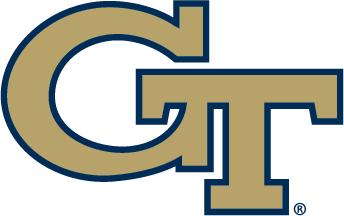Nov. 19, 2013
By Jon Cooper
Buzz Magazine
The 1974-75 Georgia Tech women’s basketball team may sound unremarkable for its 6-16 season, but it encompassed all the traits of a champion. The members of that team were pioneers and an inspiration to other women at Georgia Tech and universities across the country.
While the history books only credit the team with six wins, the fact that this group of 11 female student-athletes and their head coach, Jim Culpepper, are in the history books speaks volumes about them.
All they wanted was to play as a team and represent Georgia Tech. What they did was change the face of Georgia Tech Athletics.
“I didn’t think anything about it,” said Culpepper, who in his 12-year tenure at Georgia Tech (1969-81) coached the women’s basketball team its first six years and, two years after starting basketball, started Tech women’s volleyball, tennis and softball programs. “I was a part of history, but someone else would have done it eventually.”
Eventually wouldn’t have been soon enough for the women, who were still only playing intramurals even though Title IX had been put into effect two years earlier. That wouldn’t do for these women who wanted to truly compete.
“We thought intramurals was for the birds,” said Teresa McClure Caron (then Teresa McClure), Class of ’77, who also would letter in volleyball before graduating. “We wanted a real team.”
McClure and several others found a sympathetic ear in Culpepper, then the director of intramurals, who had started an intramural league for the women the year before.
“The girls came to me in 1973 and said they wanted a women’s basketball team,” he recalled. “I said, `Well, you have to show me that there’s interest.’ So we started an intramural league. We [had] just never had any interest. We made a big to-do to get basketball rolling. We had four teams. The champion played Georgia State. ”
Taking the next step required getting the green light from Athletic Director Bobby Dodd. Three of the women – Carolyn Thigpen, Deni Heitmann and McClure Caron – met Dodd face-to-face.
“We go in and talk to him. Carolyn did a lot of the talking. He was kind, but it was clear that what we wanted was not an issue,” McClure Caron recalled. “Finally, at the end of the conversation, Carolyn said, `Coach Dodd, are you aware of Title IX?’ He was not. That’s when we said, `You might oughta look into that.’ That was the point where the meeting ended. ”
A couple of weeks later, Culpepper got the call — and the team. The team would play in the Georgia Association of Intercollegiate Athletics for Women (GAIAW), not the NCAA. That would come later, when Georgia Tech had a larger female enrollment and issued scholarships.
Filling out the roster was primarily done by word of mouth.
“A good friend who worked in the intramural office came to me and said, `E-Ray’ they’re getting ready to start a basketball team. You need to talk to Culpepper,'” recalled Ellen Ray Chappuis (then Ellen Ray), Class of `79. “There were only two or three of us that had ever played organized ball. They had all played pickup kind of games and some intramural, but there weren’t a lot of us that had real experience.”
In all, approximately 16 people showed up at the open tryout — 11 stuck. But unlike in today’s game, there were no fancy uniforms. There were barely even basketballs. “We had no basketballs,” Culpepper recalled, with a laugh. “Dwayne Morrison, who had become the men’s basketball coach, gave me seven basketballs — two held air, the other five we had to pump up every day. Somewhere along the third week of practice somebody got in and stole all of our basketballs. I think they ended up a fraternity house, but that’s beside the point. When they found out about that, [Associate Athletic Director] John McKenna went out and bought me 12 new basketballs. He supported us.”
Culpepper, who had never coached basketball, knew he only had a couple of weeks to get the team in shape.
“We practiced every day for two hours,” recalled McClure Caron. “I can remember, we were supposed to run two miles before we showed up to practice, then we had practice for two hours, then we did wind-sprints or steps at the end of practice. He was really getting us into shape.
“We started right off the bat with a 30-second shooting clock,” she added. “The men didn’t get that for several years after that. We were ahead of the men.”
Being ahead of the men in any area was surprising, considering they weren’t even allowed to be near them.
“When we were practicing in the freshman gym, which was attached to the Coliseum, we were not allowed to go down and get water because it was near the arena court and we would distract the men,” McClure Caron recalled. “So we were not allowed to get water.”
Other times they weren’t even allowed in their own gym.
“At one point, we had a game where we got bumped out of the freshman gym for an intramural game,” McClure Caron said. “They put us in the old gym, which was where the gymnastics team practiced, so it was totally covered with chalk and we were sliding everywhere. We were spraying our feet with stick’em to try to keep from sliding. It was horrible. But the intramural team needed our court.”
“The old gym was very, very dangerous to play in because that’s where gymnastics was so there was chalk everywhere,” Ray Chappuis added. “We ended up blowing out a lot of knees and banging hips and heads because you couldn’t stop. When you tried to stop, you would literally slide. We got to the point that we would go in and wet-mop the floor before a game because we knew somebody was going to get hurt. We finally said, `We can’t play in here anymore.’ So most of our games were in the freshman gym.”
Finding opponents to play proved as difficult. The task of scheduling fell upon Culpepper, and he took to the phones, but the Georgia Tech women’s basketball brand wasn’t what it is today and his cold calls frequently were met with a cold shoulder.
“It was kind of funny,” he remembered. “I would call the college or university, identify myself. I’d say half the time the first response was, `You’re coach WHO? From WHERE? You coach WHAT?”
Eventually, Culpepper cobbled together a 22-game schedule. So, with uniforms consisting of blue shorts — bought with money from fundraisers like bake sales held by the team — and old white men’s basketball jerseys (the team wore white T-shirts underneath) the team looked the part.
“We bought pretty much everything,” said Ray Chappuis. “We had to pay for the officials. We drove our own cars to away games, bought our own gas to do that. You’d have a car full of players and everybody would pitch in a couple of bucks to buy a tank of gas. That first year was when we were doing all the fundraising and the begging, borrowing and stealing.”
Culpepper wasn’t even getting paid, and he wouldn’t until his sixth season on the job.
But regardless of how bad things seemed the team always found a bright side.
“We were just doing our thing,” said Ray Chappuis. “We were just playing for the love of the game. It didn’t really matter to us if there were 100 people in the stands or there were two people in the stands. We knew we were doing something important and that we all loved the game.”
They adopted the nickname Jackettes and were ready to take the floor.
They debuted only weeks after getting the green light to become a program, participating in a three-game tournament at Shorter University in Rome. Tech dropped its first ever game, 94-25, to the host school. That was followed by a 67-14 loss to Augusta College and an 83-25 loss to DeKalb Central.
“They knew they had tried as hard as they could,” Culpepper said. “They beat us like a drum. They beat us six ways to Sunday, but the players had a good time. Their attitude was very encouraging. They never really got down. They got disappointed but not defeated. They lost some games but they were never defeated.”
The Yellow Jackets would taste victory in their fifth game, a 51-33 victory over Gordon, then made it two straight by knocking off DeKalb South, 56-48.
Few, if any, statistics were kept for the games, nor was there much game story coverage. Few of the games were really close, in fact, as only two of Tech’s losses were by fewer than 20 points. But this team didn’t dwell on numbers.
“They were Tech students. They competed. They really tried,” Culpepper said. ”We won six ball games and lost 16. We won five games against junior colleges, and our only game we won against a four-year school was Tift College in Forsythe.
“The first couple of years, my players suffered because of me,” he added. “The women coaching these other teams, A) wanted to beat Georgia Tech, and B) beat up on that male chauvinist pig coaching Georgia Tech.”
But when all was said and done at the end of that first season, the Jackets were of one mindset.
“We’re going to come back and do better,” Culpepper said.
That fighting spirit paid off down the road for Georgia Tech.
“I am so proud when I see Georgia Tech playing on TV,” said McClure Caron. “I’m like, `Are you kidding me? Wow!’
Special Thanks to Marilyn Somers and the Georgia Tech Living History Program.









